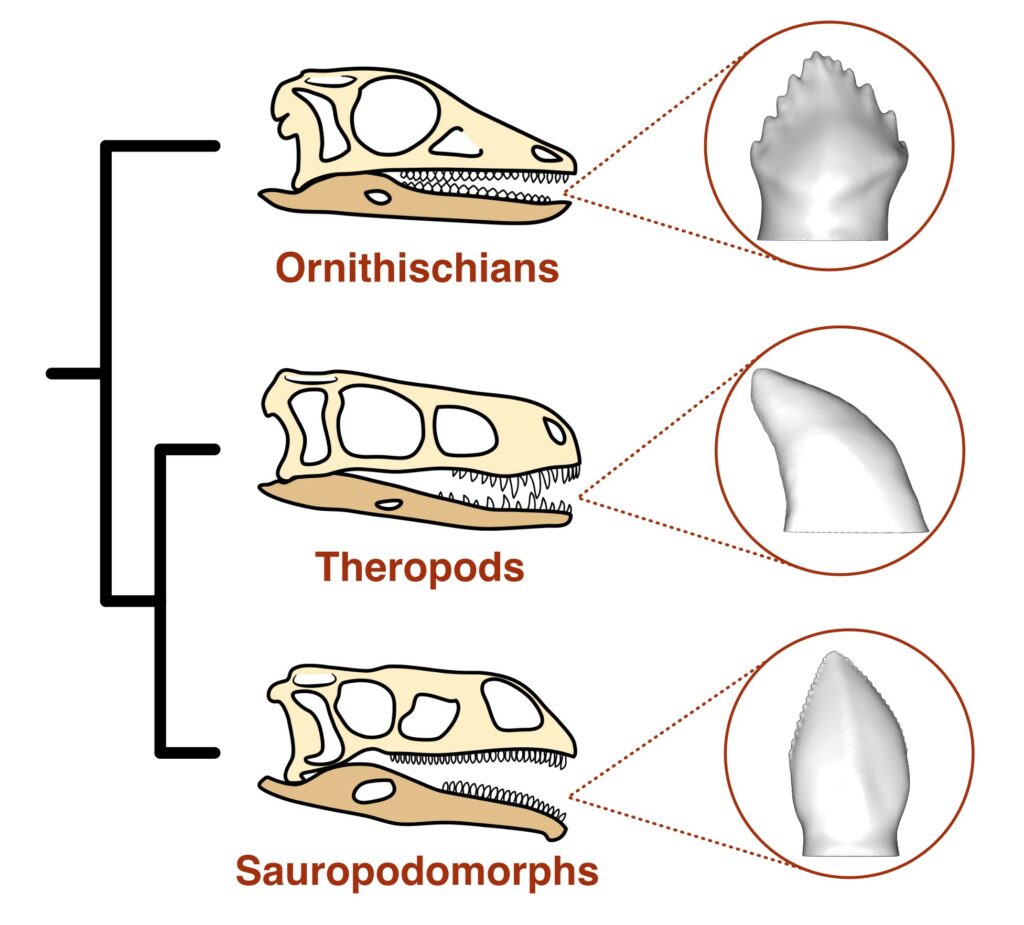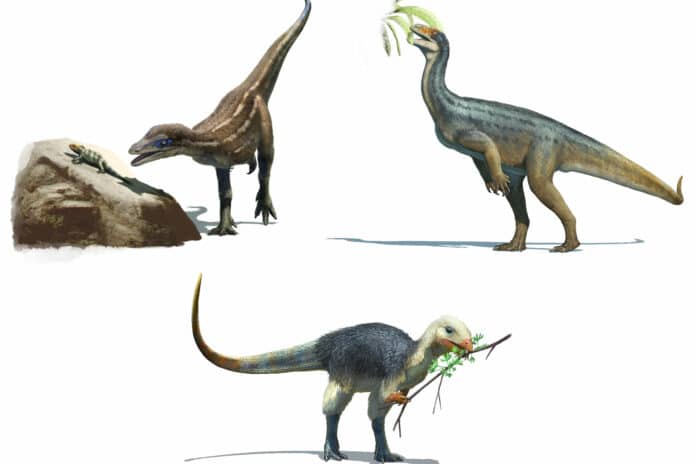Dinosaurs evolved a remarkable diversity of dietary adaptations throughout the Mesozoic, but the origins of different feeding modes are uncertain, especially the multiple origins of herbivory. The feeding habits of early dinosaurs have mostly been inferred from qualitative comparisons of dental morphology with extant analogs.
Palaeobiologists from the University of Bristol investigated the dental morphofunctional diversity of early dinosaurs by looking at the tooth shapes, simulating their tooth function with computational modeling, and comparing them to living reptiles and their diets.
They found that many groups of plant-eating dinosaurs were ancestrally omnivorous and that the ancestors of our famous long-necked herbivores, such as Diplodocus, ate meat.
The earliest dinosaurs are mysterious because they were much smaller than their more recent descendants and spent the majority of the Triassic era under the shadow of reptiles that resembled crocodiles. Dinosaurs survived the Triassic-Jurassic mass extinction and were able to adapt in their wake, becoming the dominant group for the remainder of the Mesozoic. However, how diverse they were in diet and ecology is still being determined. Scientists believe something must have happened in the Triassic that allowed this to happen.
Lead author Dr. Antonio Ballell from the University of Bristol said, “Soon after their origin, dinosaurs start to show an exciting diversity of skull and tooth shapes. For decades, this has made paleontologists suspect that different species were already experimenting with different kinds of diets. They compared them to modern lizard species and tried to infer what they ate based on the similarities in their teeth.
“We investigated this by applying a set of computational methods to quantify the shape and function of the teeth of early dinosaurs and compare them to living reptiles with different diets. This included mathematically modeling their tooth shapes and simulating their mechanical responses to biting forces with engineering software.”

Professor Mike Benton, a co-author of the study, said: “With this battery of methods, we could numerically quantify how similar early dinosaurs were to modern animals, providing solid evidence for our inferences of diets. Theropod dinosaurs have pointy, curved, and blade-like teeth with tiny serrations, which behave like those of modern monitor lizards. In contrast, the denticulated teeth of ornithischians and sauropodomorphs are more similar to modern omnivores and herbivores, like iguanas.”
Professor Emily Rayfield, a senior co-author, said: “Our analyses reveal that ornithischians – the group that includes many plant-eating species like the horned dinosaurs, the armored ankylosaurs, and the duck-billed dinosaurs – started as omnivores. And another interesting finding is that the earliest sauropodomorphs, ancestors of the veggie long-necked sauropods like Diplodocus, were carnivores. This shows that herbivory was not ancestral for any of these two lineages, countering traditional hypotheses and that the diets of early dinosaurs were quite diverse.”
Dr. Ballell concluded: “It seems that one of the things that made the first dinosaurs special is that they evolved different diets throughout the Triassic. We think this might have been key for their evolutionary and ecological success.”
Journal Reference:
- Antonio Ballell et al. Dental form and function in the early feeding diversification of dinosaurs. Science Advances. DOI: 10.1126/sciadv.abq5201
